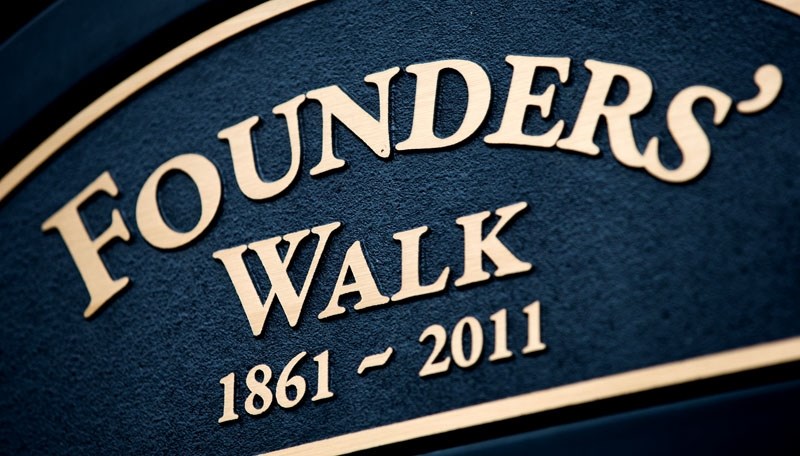The city unveiled the second phase of Founders’ Walk last week. The project, originally opened with its first phase during the sesquicentennial anniversary of the mission in 2011, is meant to act as a permanent reminder of several of St. Albert’s most prominent and historical people, places and events.
The walk that first went from the Clock Tower to the top of Mission Hill where the Father Lacombe Chapel still stands now extends along St. Vital Avenue to the grain elevators on Meadowview Drive.
The entire project is considered to be both a recreation and an expansion of the Founders’ Promenade. That pathway was established in the late 1980s to pay homage to some of St. Albert’s early settlers. Founders’ Walk also tied in with the earlier Memorial Drive, a 1929 effort that remembered the Oblate Missionaries, members of the 1885 St. Albert Mounted Rifles and veterans of the First World War.
It’s a walking geographical map through history, showing St. Albertans the significance of what happened and where in the earlier decades. These stories are told through interpretive story panels and signs at numerous sites. MusĂ©e HĂ©ritage Museum curator Joanne White sees a lot of value in establishing that connection through time for many residents and even tourists.
“Not everyone takes part in the historic programs or events that we offer at the museum or at the heritage sites. It’s important to be able to access that information and just get a sense of place. We had a really quite vibrant business district right around there early on and a lot of people are unaware of that,” she said.
That vibrant district focused around the Hudson’s Bay Trading Post on St. Vital Avenue. She added that, during the tour to open the second phase, she took pleasure in telling some of the participants how St. Albert was actually larger than Edmonton at one point around 1900.
Some of the points of interest divulge details of the bison hunt of the old days, the impact of the Grey Nuns, and the importance of the grain elevators to trade across the prairies and to the growth of this community.
You might also learn interesting tidbits of trivia such as where the first movies were played in St. Albert. That was at the Empress Hotel, of course. You could also finally understand why Seven Hills has a name that is more of a misnomer.
“At one time there were seven terraces that they put into the hills but so many people got injured tobogganing that they actually took them out, but by that point, the name had stuck.”
A phase three of the walk is still in the planning stages. The Healing Garden, a botanical area dedicated to the history of St. Albert’s previous residential schools, was approved for that phase. Commencement of construction on that is still unscheduled.
People can go to the city’s website at www.stalbert.ca to view an interactive map or to download it at home for their own self-guided tour.




